Weapon Practice with Ken and Jo
Practice with the bokken (wooden sword), jo (wooden staff) and tanto (knife) is a unique and important part of our Aikido curriculum. This practice reflects the use of weapons as a way of uncovering the deeper meanings of Aikido principles as taught by O’Sensei in the Iwama dojo.
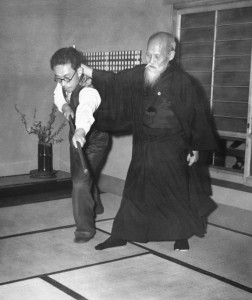
“The Way of aiki and the Way of the sword are intimately connected in basic principles, movements and methods … Among the many similarities between aikido and swordsmanship are certain fundamentals: the standing posture, the distance or space between two people, the placing of the eyes, the movement of the feet, as well as the derivative techniques, all of which are strikingly parallel, if not identical.“
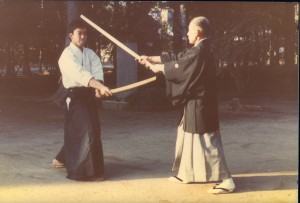
It was this integration of weapon and body practice into a combined Aikido system (riai) that was taught directly by O’Sensei only to Saito Sensei, at the Iwama Dojo.
It was only at Iwama that O’Sensei taught weapon practice with ken and jo. For this reason, Saito Sensei became the inheritor of the weapons training that was developed by O’Sensei and taught at Iwama. This practice of the bokken and jo, Saito Sensei codified and maintained at Iwama. Only students who attended practice there were able to learn it.
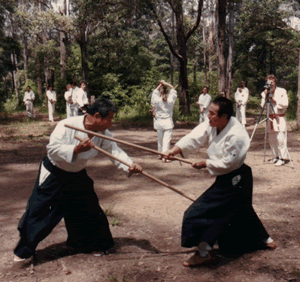
As Saito Sensei explained (in his first book Aikido: Volume 1 Sword, Stick, Body Arts):
To understand the combined Aikido system is to realize that one is not dependent upon a ken, jo or other weapon. Development of mind, body and technique does not rely upon armoury, but on independence of action. If a sword is used do not realize it as a sword. If a jo, do not depend on it, but feel the common harmony of movement.Weapon practice with Ken and Jo emphasises both the posture of hito e mi (the back triangle stance) and awase (harmony of movement). It is the incorporation of these two concepts that makes Aikido unique. This unified practice of ken, jo and body is the practice of the Iwama Dojo passed on by O’Sensei.
Derek Minus, who trained with Saito Sensei, as an uchi-deshi (live-in student) at the Iwama dojo in 1980, holds the four weapon transmission schools. He is qualified to instruct Aiki-ken (sword) and Aiki-jo (staff) and continues this practice at special Sunday training sessions each week.
Takemusu Aiki Bukiwaza refers to the practice of Aiki-ken and Aiki-jo techniques developed by O-Sensei and taught to Saito Sensei who categorised and catalogued these weapons forms as he incorporated them into his daily practice.
Saito Sensei Shihan spoke often and in many different places about the incorporation of the weapon techniques he learnt from O’Sensei. He would say that O’Sensei did not practice in a “1-2-3 method”, rather he taught the young Saito Sensei, part or whole patterns of jo or ken movements. Saito Sensei explained that in order to remember the sequence of moves, he broke them down into individual elements and gave them names. So although the techniques originated with O’Sensei, it was Saito Sensei who named and catalogued the suburi movements and arranged the partner practices.
The practice of Bukiwaza was central to the Takemusu Aiki practice handed down from O’Sensei to Saito Sensei which he continued to teach in the Iwama Dojo after the Founders passing in 1969 and for a period in the Aikikai Hombu Dojo in Tokyo from 1961 with O’Sensei’s approval. Saito Sensei was the only teacher, besides the Founder himself, permitted to teach Aiki bukiwaza there.
This integration of weapon and empty hand (body) practice is best described in Saito Sensei’s first series of five instructional books, TRADITIONAL AIKIDO •Sword •Stick •Body Arts first published in 1973.
Under the heading RIAI – The Combined Aikido System, Saito Sensei wrote that:
“Generally speaking, Aikido is known by its taijutsu [body] techniques. However, the taijutsu movements are based on movements of the ken [sword].It is difficult to separate those movements which are based on the ken from those of taijutsu. Rather it is a harmonious blending of both that creates a single Aikido. In other words, both systems agree with each other. If one were to mix present forms of Kendo and Judo, and expect the result to be similar to Aikido one would be making a mistake. Even when using the same ken, Kendo and Aikido are very different even though they may appear to be similar. It would also be very difficult to explain Kendo in terms of Judo and vice versa.
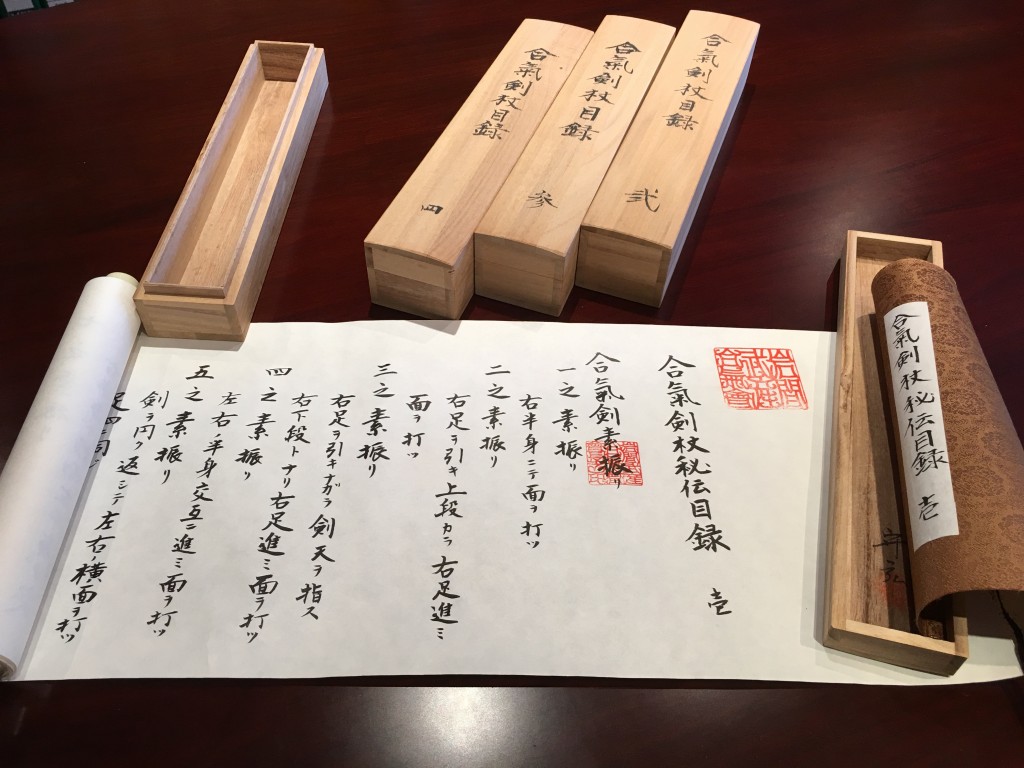
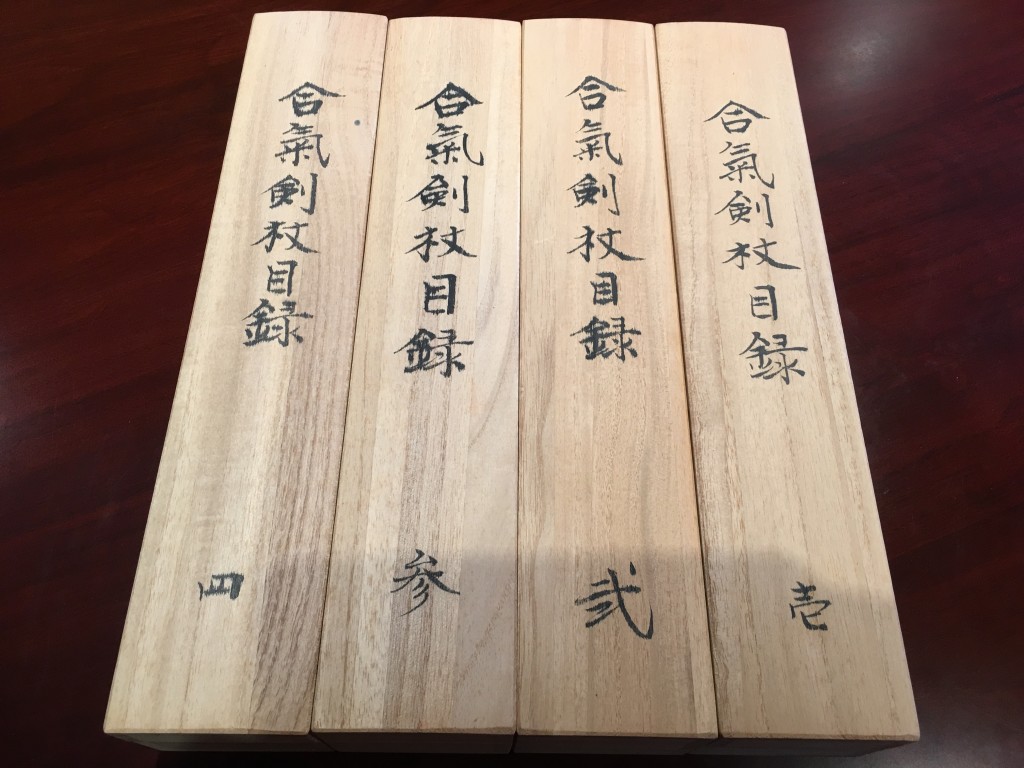
In January 2015, I accompanied my teacher, Takayasu Sensei Shihan when he attended the Aiki-Kai Australia’s 50th Anniversary summer school, held in Melbourne with the Doshu. After witnessing the Aiki-Kai interest in weapon practice, Takayasu Sensei wrote to the Aiki-Kai:
I would like to make an effort to preserve O-Sensei’s weapon system within Aikikai structure … As I am [the] only one of his [Saito Sensei’s] Japanese shihan who is teaching overseas, I believe that this beautiful art of O-Sensei, Aikiken & Aikijo training syllabus, should be returned to [the] Aikikai. Should Aikikai Australia be interested in O-Sensei’s weapon system, Aikiken & Aikijo, I am happy to return this unique training syllabus back to Aikikai Australia. I think it is important to keep O-Sensei’s weapon system as well as Sugano Sensei’s weapon system within Aikikai Australia, which is the only official organisation of Aikikai Honbu in Australia, when you consider the next 50 years of Aikido development in Australia.
It was with this thought in mind that in August 2015, Takayasu Sensei conducted a weekend seminar to present the weapons training syllabus as taught by O-Sensei in the Iwama Dojo after World War II.
In March 1990, I was awarded the 1st, 2nd, 3rd and 4th Mokuroku (Aiki-Ken and Aiki-Jo) weapons scrolls personally by Saito Sensei Shihan after testing for them at the Iwama Dojo. To support that effort by my teacher to promulgate O’Sensei’s aiki-ken and aiki-jo forms, I have decided to teach and publish information about the Saito Sensei Mokuroku (weapons scrolls).
You can read and download the English translations of these weapon scrolls by clicking on the images below:

